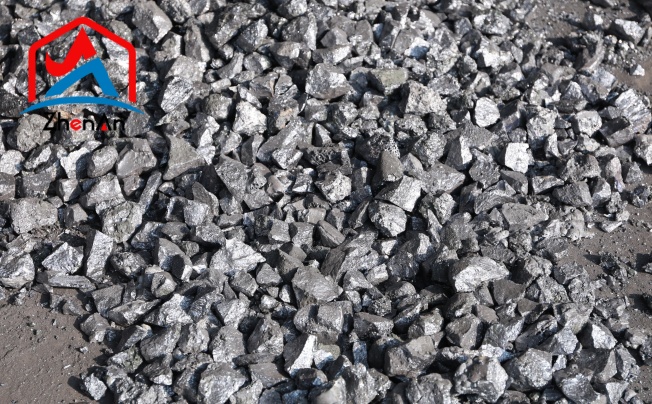Composition of Calcined Petroleum Coke
Raw Materials Used in Its Production
Calcined Petroleum Coke (CPC) is derived from high-quality petroleum coke that undergoes a series of processes to remove volatile components, moisture, and impurities. The primary raw material for CPC production is raw petroleum coke, which is typically obtained as a byproduct of the refining process of crude oil.
This raw coke is sourced from various refineries worldwide, where it is processed further to meet the stringent requirements for calcination. The quality of raw petroleum coke is crucial in determining the final properties and performance of CPC, with parameters such as sulfur content, volatile matter, and metal content playing significant roles.
Chemical Composition
The chemical composition of calcined petroleum coke varies depending on the quality of the raw materials used and the calcination process parameters. However, typical compositions include carbon (C), hydrogen (H), sulfur (S), nitrogen (N), oxygen (O), and trace elements such as metals (e.g., vanadium, nickel, and iron).
The carbon content of CPC is usually above 98%, making it a highly carbonaceous material suitable for various industrial applications. Sulfur content is a critical parameter, as high sulphur levels can adversely affect the performance of CPC in certain applications, such as anode production for aluminum smelting.
Physical Properties
Calcined Petroleum Coke exhibits several physical properties that make it suitable for a wide range of industrial applications. One of its most significant properties is its high carbon content, which imparts excellent conductivity and heat resistance. CPC is a dense, granular material with a fine particle size distribution, typically ranging from a few micrometers to several millimeters.
Its specific gravity varies depending on the degree of calcination and the presence of impurities but is generally in the range of 2.0 to 2.2. Additionally, CPC is characterized by its low porosity, high mechanical strength, and low reactivity, making it an ideal carbonaceous material for use in metallurgical processes, carbon electrodes, and other specialized applications.
Flammability of Calcined Petroleum Coke
Flammability, in the context of calcined petroleum coke (CPC), refers to the propensity of the material to ignite and sustain combustion under specific conditions. This property is of paramount importance due to the widespread industrial applications of CPC, where it may encounter environments with varying degrees of fire risk. Understanding the intricacies of CPC flammability entails delving into its chemical composition, physical properties, and the interactions that occur during combustion processes.
Factors Affecting the Flammability of CPC
Several factors influence the flammability of calcined petroleum coke, making it a multifaceted phenomenon. Firstly, the elemental composition of CPC plays a crucial role, with carbon content being the primary determinant of its combustibility. Additionally, the presence of impurities such as sulfur, nitrogen, and metals can alter the ignition and burning characteristics of CPC.
Particle size distribution and porosity also affect flammability, as finer particles tend to combust more readily due to their increased surface area. Moreover, external factors such as temperature, pressure, and the availability of oxygen can significantly impact CPC flammability.
Elevated temperatures can lower the ignition threshold and accelerate combustion rates, while higher pressures may restrict oxygen diffusion, affecting the intensity of the flame. Furthermore, the presence of catalysts or contaminants in the environment can catalyze combustion reactions, further influencing the flammability behavior of CPC.
Applications of Calcined Petroleum Coke
Utilizing CPC in Metallurgical Applications
Calcined Petroleum Coke (CPC) plays a crucial role in metallurgical applications, where it serves as a key component in the production of anodes for aluminum smelting. The aluminum industry relies heavily on CPC due to its high carbon content and low impurities, which make it an ideal material for producing anodes that are essential for the electrolytic process of aluminum production.
During electrolysis, the anodes made from CPC undergo intense heat and electrical current, requiring them to possess excellent electrical conductivity and resistance to thermal shock. CPC meets these requirements admirably, contributing to the efficiency and sustainability of aluminum production processes worldwide.
In addition to its use in aluminum smelting, CPC finds application in the production of other metals such as titanium, steel, and ferroalloys. In steelmaking, CPC is utilized as a carbon additive in the form of graphite electrodes or carbon raisers to adjust the carbon content of molten steel and improve its quality.
The high carbon content of CPC ensures effective carbonization during the steelmaking process, resulting in the desired mechanical properties and chemical composition of the final steel product. Moreover, CPC's low sulphur and nitrogen content make it a preferred choice for applications where stringent quality requirements must be met, such as in the production of high-performance steel alloys for the automotive and aerospace industries.
Exploring CPC's Role in the Chemical Industry
CPC's high surface area, porosity, and thermal stability make it an excellent substrate for anchoring active catalysts, thereby enhancing their surface area and catalytic activity. This enables efficient conversion processes in petrochemical, pharmaceutical, and environmental applications, where catalysts play a pivotal role in driving chemical reactions to desired outcomes.
Furthermore, CPC finds utility in carbonization reactions, where it serves as a precursor for producing carbon materials with tailored properties. Through controlled pyrolysis or carbonization processes, CPC can be transformed into a range of carbon products, such as activated carbon, carbon fibers, and carbon black.
These carbon materials find extensive applications in diverse industries, including energy storage, water purification, and automotive manufacturing. The chemical industry can innovate and develop advanced materials that address evolving market demands and sustainability challenges by harnessing CPC's carbonaceous nature and customizable properties.
Future Outlook and Research Directions
Emerging Trends in CPC Production and Usage
As industries evolve and technology advances, the production and usage of calcined petroleum coke (CPC) are expected to follow suit. One emerging trend is the adoption of more sustainable and environmentally friendly production methods. This includes the implementation of cleaner energy sources, such as renewable energy, in the calcination process.
Additionally, there is a growing interest in the development of alternative raw materials that can be used to produce CPC, reducing dependency on traditional petroleum sources. These trends align with global efforts to mitigate climate change and reduce carbon emissions, positioning CPC producers to adapt to evolving regulatory landscapes and consumer preferences.
Areas for Further Research and Development
Despite its widespread industrial applications, there are still several areas within the realm of calcined petroleum coke (CPC) that warrant further research and development. One area of focus is the optimization of the calcination process to enhance the quality and consistency of CPC products. This includes studying the influence of various parameters, such as temperature, residence time, and additives, on the properties of CPC.
Additionally, research efforts are directed toward exploring new applications for CPC in emerging industries, such as energy storage and advanced materials. By expanding the scope of CPC utilization, researchers aim to unlock its full potential and create new opportunities for market growth.






